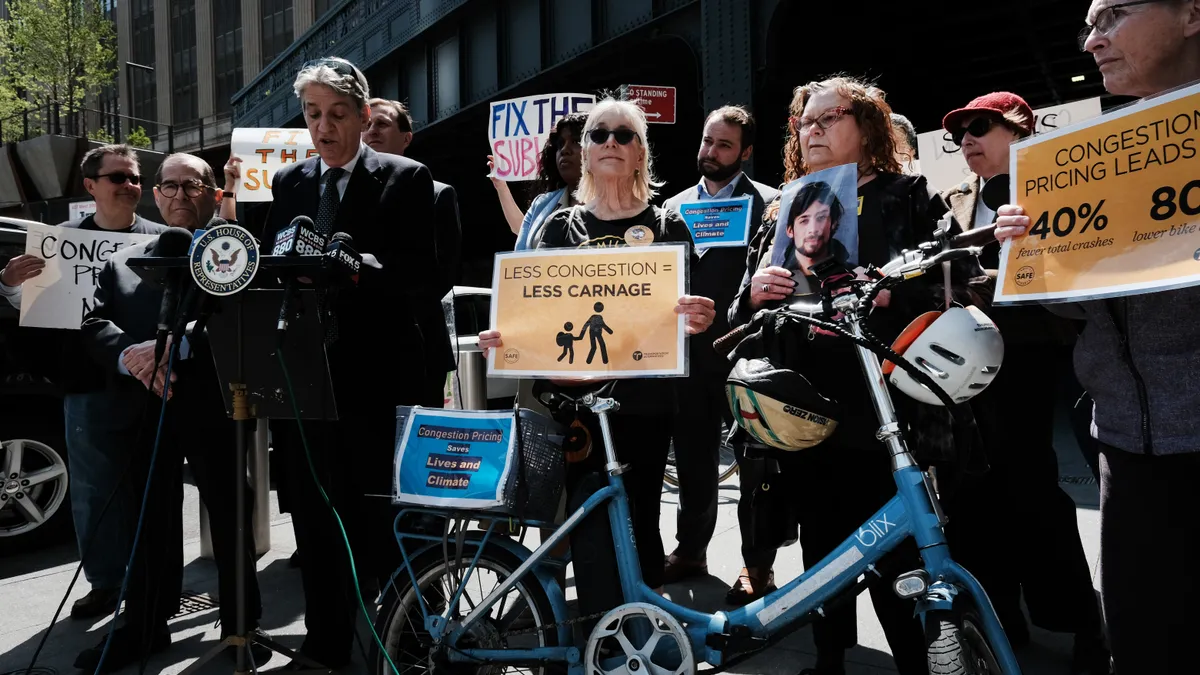Dive Brief:
- Details of how New York’s congestion pricing plan will affect taxi and ride-hailing vehicles, commuter buses and other drivers entering Manhattan were laid out Monday afternoon in a meeting of the Traffic Mobility Review Board. The six-member panel will issue recommendations on the program’s tolling structure this month, according to news reports.
- Fees for most vehicles in Manhattan entering or driving south of 61st Street could begin in May 2024, according to news reports. There would be no charges upon exiting the congestion zone or driving within it.
- However, the newly laid-out details failed to assuage the concerns of New Jersey Gov. Phil Murphy, whose spokesperson told WABC, “This proposed tolling program remains a fundamentally flawed and unjust scheme to balance the MTA’s budget at the expense of hardworking New Jerseyans.”
Dive Insight:
New York’s program to charge most vehicles entering Manhattan’s central business district stands to be the nation’s first congestion pricing program. It is designed to both reduce traffic congestion and bring much-needed revenue to the New York Metropolitan Transportation Authority.
The MTA plans to leverage those funds to finance about $15 billion in bonds to support the transit agency’s capital investment program. While the TMRB did not settle on a specific toll fee, MTA Chairman and CEO Janno Lieber hinted Monday that it would likely be around $15 per passenger vehicle.
The TMRB laid out four potential scenarios, each of which included nighttime discounts and toll credits that would offset some of the existing fees for those using tunnels to cross into Manhattan. While all bridge and tunnel crossings from New Jersey are currently tolled, some bridges from the Bronx and Queens are free.
“I think it’s good transportation policy offering these credits because you don’t want to cause unintended consequences and you don’t want to incentivize high levels of toll shopping where it doesn’t exist already,” said Kate Slevin, executive vice president at the Regional Plan Association. Slevin suggested that an electronic tolling service like E-ZPass, which is already in use at New York City area bridges and tunnels, could easily manage the credits.
Other details discussed at the TMRB meeting appear to largely follow recommendations made by the RPA. These include exempting commuter buses and charging taxi and ride-hailing passengers a fee of $1 to $2, rather than charging the driver. But taxi drivers weren’t happy with that plan. Bhairavi Desai, executive director of the New York Taxi Workers Alliance, said in an emailed statement, “A third surcharge on taxi fares, and the loss of trips it would cause, will devastate an industry and workforce that is barely surviving,” adding that passing the cost along to riders “will lead to less fares and leave drivers jobless and medallion owner-drivers with life-long debt.”












